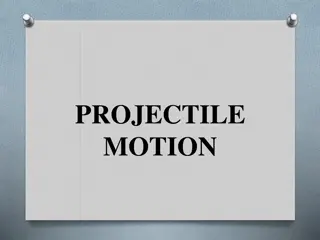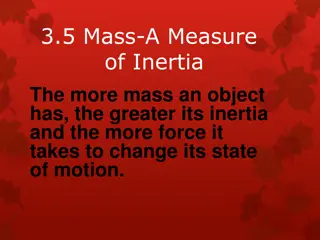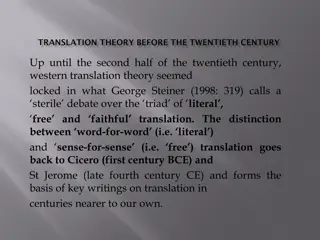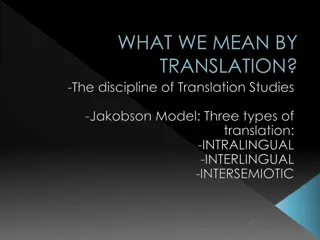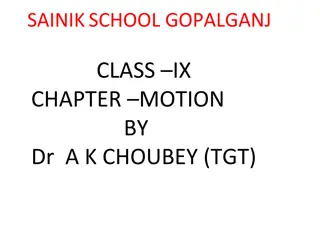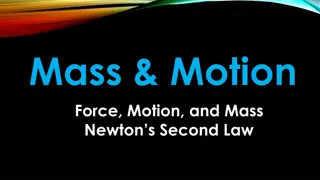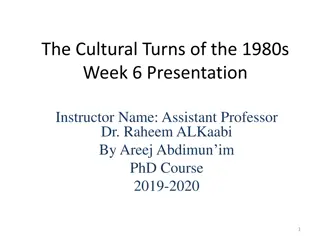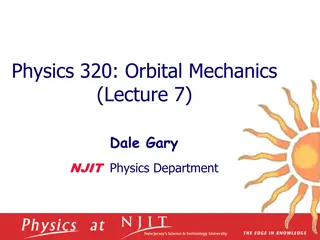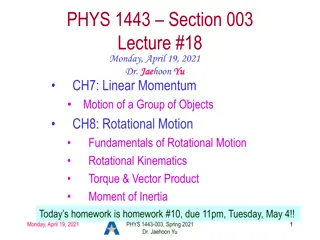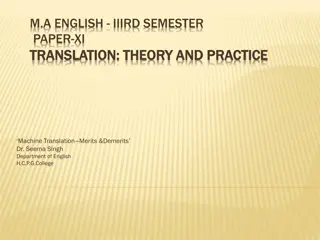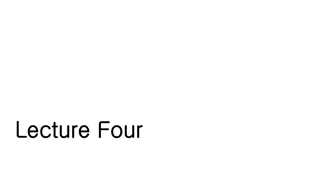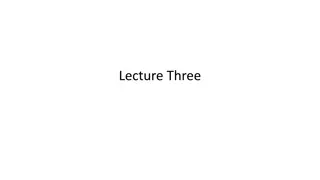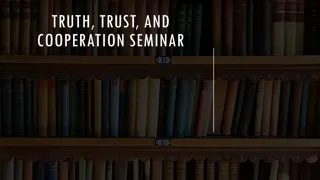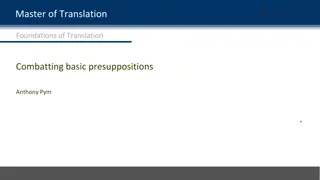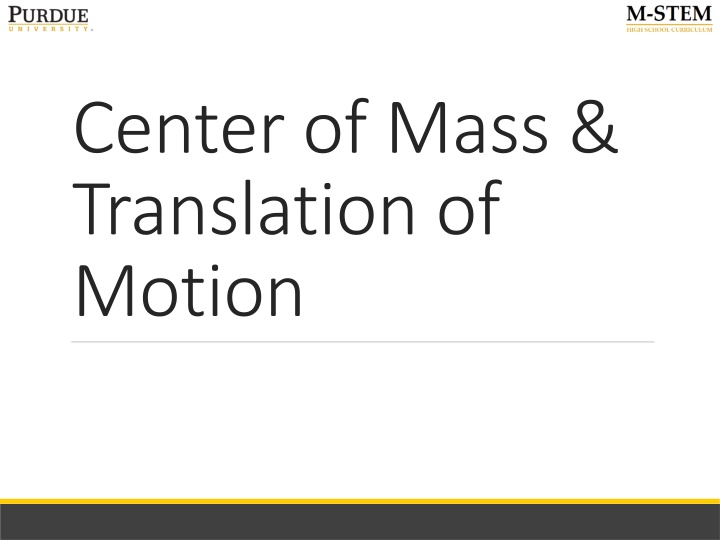
Center of Mass & Translation of Motion
Explore the concept of center of mass in motion and how it relates to different types of motion like translation and rotation. Delve into lever investigations to understand the equilibrium rule and the role of the center of mass in balancing objects.
Download Presentation

Please find below an Image/Link to download the presentation.
The content on the website is provided AS IS for your information and personal use only. It may not be sold, licensed, or shared on other websites without obtaining consent from the author. If you encounter any issues during the download, it is possible that the publisher has removed the file from their server.
You are allowed to download the files provided on this website for personal or commercial use, subject to the condition that they are used lawfully. All files are the property of their respective owners.
The content on the website is provided AS IS for your information and personal use only. It may not be sold, licensed, or shared on other websites without obtaining consent from the author.
E N D
Presentation Transcript
Center of Mass & Translation of Motion
Redefining Motion Traditionally motion is diagramed using dots, or points, within a coordinate plane. Real objects, however, have the tendency to undergo more than one type of motion, due to the complex forces acting on the object
Redefining Motion cont., Observations indicate that rotating objects traveling in a linear direction will have one point that appears to move in only one type of motion. The general motion of an extended object (hammer) can be considered as the sum of the translational motion of the center of mass (??) plus rotational, vibrational, or other types of motion about the ??
Revisiting Lever Investigation During the lever investigation, two objects of equal mass were placed on either side of the fulcrum Mass m2 Mass m1 Lever The lever balanced because the product of ?1?1was the same as the product for ?2?2 l2 l1 Fulcrum Next Two different masses were placed on the lever and the lever didn t balance until the larger mass was moved closer to the fulcrum Mass m2 Mass m1 Lever This allowed us to develop the equilibrium rule l2 l1 Fulcrum ?1?1= ?2?2
Lever cont., The position of the fulcrum can be considered equivalent to the center of mass. Mass m2 Mass m1 During the lever investigation the, as the masses and positions changed the fulcrum remained stationary Lever l2 l1 Fulcrum Mass m2 Mass m1 If the fulcrum and lever were removed the masses and positions would describe the location of the center of mass (??) Lever l2 l1 center of mass (CM)
Center of Mass (??) Lets consider a system made of only two particles (small objects), of mass ?? and ??. These two particles lie on the ?-axis at position ?? and ??. y xCM mB mA x xA xB We can define the ?? of the system to be at position ???, given by ???=????+???? ?????? Where ?????? is the total mass of they system ??+ ??
Center of Mass (??) cont., If the two masses are equal (??= ??= ?), then ??? is midway between the two masses ???=? ??+?? =??+?? 2? 2 However, When one mass is greater than the other mass, ??? is closer to the larger mass y xCM mA mB x xA xB
Center of Mass (??) cont., We can extend this reasoning to include any number of points along an extended object (i.e. hammer) y xCM mC mD mB mA x xA xB xC xD ???=????+????+???? . . . ??????
Center of Mass (??) cont., If the particles are spread out in two or three dimensions (? ?) or (? ? ?), then one must specify not only the ? coordinate of the ?? (???), but also the ? and ? coordinates. ???=????+????+???? . . . ?????? ???=????+????+???? . . . ?????? ???=????+????+???? . . . ??????
Center of Gravity (??) An objects center of gravity is that point at which the force of gravity can be considered to act. There is a conceptual difference between the center of gravity and the center of mass because the force of gravity actually acts on all the different parts or particles of an object.
Translational Motion The motion of the center of mass is directly related to the net force acting on the system as a whole The hammer is experiencing a gravitational force all along the path
Translational Motion cont., Just as the masses of individual particles can be used to determine center of mass ???=????+????+???? . . . ?????? The individual motion of each particle can be used to determine the motion of the center of mass ???= ????+ ????+ ???? . . . ???= ????+ ????+ ???? . . . ????= ?????? ??? This leads to a complicated analysis of multiple particles relative to the center of mass
Translational Motion cont., If we view the system as a single object this brings us full circle to concepts learned during Module 0: Speed, Velocity, and Acceleration Mass of object (?) is the sum of all the individuals particles (??????) Velocity of object (?) is the sum of all the individual velocities (???) Acceleration of object (?) is the sum of all the individual accelerations (???) Understanding of the math allows one to investigate more complicated questions and find new, and novel answers.




